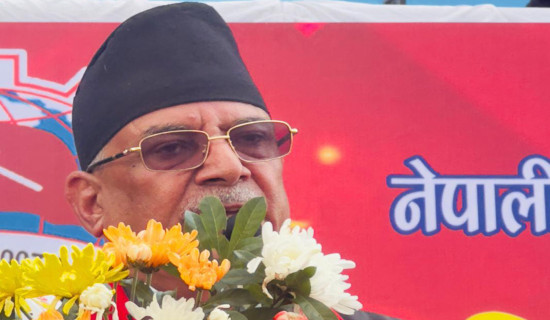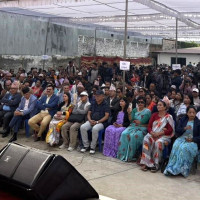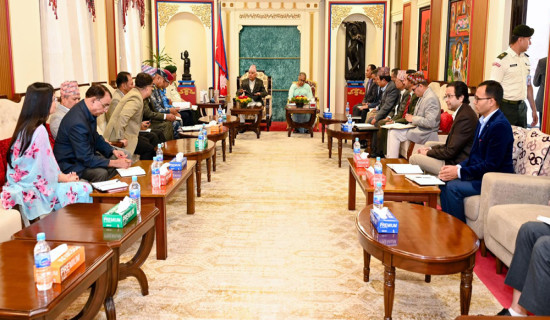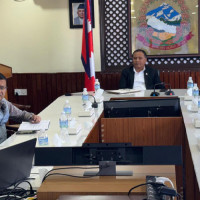- Saturday, 18 October 2025
New standards set for buildings and lakes in Pokhara
BY PHADINDRA ADHIKARI,Pokhara, Feb. 24: Pokhara Metropolitan City has set new standards for buildings, other infrastructures, rivers and canals in the valley.
Mayor of the Metropolitan City, Dhanraj Acharya, unveiled the 'Pokhara Metropolitan City Building and Infrastructure Standard-2080' during a programme held on Wednesday.
Pokhara Metropolitan City no longer requires soil testing when constructing houses up to five floors.
The 13th executive meeting of Pokhara Metropolis approved these updated standards. “These standards have been developed with the financial support of the European Union,” said Surendra Paudel, Head of the House Map Branch of the Metropolis. There is no requirement to conduct soil testing for structures up to 17 metres or 55 feet tall, he informed.
Previously, buildings only up to three floors were allowed in the area. Presently, 19 buildings in the Metropolis have more than 10 floors.
In crowded areas such as industrial zones, educational institutions, cinemas, and party venues, the width standards are now aligned with the length of the structures.
For instance, a structure up to 100 metres long is required to have a 6-metre entry point whereas a structure spanning 200 metres should have an 8-metre entry point. For congested places spanning 400 and 1000 metres in length, the entrance width should be 11 metres and 14 metres respectively. Additionally, entrances to infrastructures longer than 600 metres must be 22 metres wide.
Standards for lakes, including Phewa Lake, have been established by the Supreme Court's directive. The standard distance from the bank is set at 65 metres for Phewa Lake, 100 metres for Begnas and Rupatal, and 50 metres for other lakes. For small ponds within the metropolis, a standard distance of six metres from the shore has been fixed.
In the case of construction in slope and landslide-prone areas, there is a provision for setbacks according to their height. For heights up to five metres, a setback of two meters is required while for buildings whose heights range from five to 10 metres, three metres is required, and for heights between 10 to 15 metres, a setback of five metres is mandated.
Similarly, for the construction of buildings with 15 to 20 metres height, a setback of 7.5 metres is required, while a setback of 10 metres has been established for structures exceeding 20 metres in height near the slope areas and landslide-prone zones.
New standards have maintained regulations for all streams and rivers flowing through Pokhara Metropolis. The Seti River and Mardi, Suroudi, Kali, Pundi, and Harpankhola have been designated with a standard distance of 30 metres. The standards for the Yamdi and Suikhetkhola have been set at 17 metres.
When constructing infrastructure near the Firke and Bulaudi rivers, a clearance of six metres must be maintained while a seven-metre clearance is required for buildings and other infrastructure near the Bagadikhola, Begnastal River and Talakhola.
Similarly, a clearance of 10 metres is mandated for Bhalamkhola and Kahunkhola, and 12.5 metres for the Pardi River. Buildings must adhere to a six-metre clearance standard near all other common openings within Pokhara Metropolis.
Mayor Acharya said, “First, we raise awareness about the new standards, and then we proceed with implementation.” During the programme, Ranjan Prakash Shrestha from the European Union expressed gratitude to the metropolis for embracing the new standards and committing to their implementation.
















